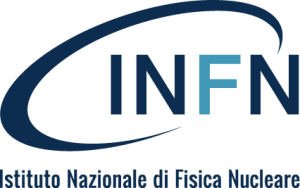Pre-Conference Day – Interactive Teaching Session
Kickstart your FRPT 2025 experience with this interactive teaching session designed to provide a comprehensive introduction to the fundamentals of Spatially Fractionated Radiotherapy (SFRT) and FLASH.
Targeted at PhD students, post-doctoral fellows, MDs, and early-career researchers in physics, chemistry, biology, and clinical investigation, this course is particularly suited for newcomers to the field.
Through engaging lectures, interactive discussions, and audience quizzes, participants will gain a solid foundation in the physics, chemistry, and biology behind SFRT and FLASH, as well as insights into their clinical applications and research opportunities.
Aim:
To present the current state of the art in SFRT and FLASH, offering participants the essential knowledge needed to embark on research projects in these rapidly evolving areas.

Preliminary Programme
*Please note that this is a preliminary programme and is subject to changes
Cristian Fernandez-Palomo (UNIBE-Bern, CH) – 14:30-15:10
The Basics of SFRT: From Physics to Biology and Clinical Applications
Learning Objectives:
What is SFRT?
What are the dosimetric challenges, and how can they be overcome?
What is the impact of SFRT on normal tissues and tumors?
How to identify and develop relevant models.
What is needed for future clinical developments?
Identify relevant research questions.
Discussion (10 min)
Jan Schuemann (MGH, USA) – 15:10-15:50
The Basics of Physics Applied to FLASH
Learning Objectives:
What accelerators are available for FLASH?
What is needed for future clinical developments?
What dosimetry procedures are available?
What are the developments for treatment planning systems (TPS)?
Identify relevant research questions.
Discussion (10 min)
Coffee Break - 15:50-16:10
Break & Networking Time
Emanuele Scifoni (TIFPA, Italy) – 16:10-16:50
The Basics of Radiation Chemistry Applied to FLASH
Learning Objectives:
Why radiation chemistry (experimental and theoretical) is useful in investigating FLASH mechanisms, and what we’ve learned so far.
What tools do we have at hand today (simulation codes, experimental systems)?
What are the major challenges and open questions?
Discussion (10 min)
Marie-Catherine Vozenin (HUG-UNIGE, CH) – 16:50-17:30
The Basics of Biology Applied to FLASH
Learning Objectives:
What do we know today about the impact of FLASH and SFRT on normal tissues and tumors?
How to identify and develop relevant models to foster clinical applications.
Identify relevant research questions.
Discussion (10 min)
General Conclusion - 17:30-17:40

![logo_AIFM_senza scritte interne[2]](https://frpt-conference.org/wp-content/uploads/sites/124/2024/06/logo_AIFM_senza-scritte-interne2-150x150.jpg)





